|
Displaying items by tag: Modern Art
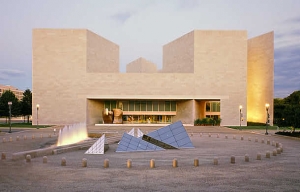
Officials at the National Gallery of Art in Washington, D.C. announced that the museum’s East Building will undergo a $30 million renovation, adding over 12,260-square-feet of exhibition space and a rooftop sculpture garden to the structure. Designed by famed architect I.M. Pei (b. 1917) and opened in 1978, the East Building houses the museum’s collection of modern paintings, drawings, sculptures, and prints as well as study and research centers and offices.
The East Building galleries will gradually close beginning in July and ending in December 2013; they will remain shuttered for approximately three years once renovations begin in January 2014. The project will create two sky-lit Tower Galleries within the East Building, which will be adjoined by an outdoor sculpture terrace. The East Building will continue to house the museum’s modern art collection and may see the addition of a room dedicated to the work of Mark Rothko (1903-1970). Museum officials hope that the additional exhibition space will inspire future donations to the National Gallery’s permanent collection.
The East Building project is part a Master Facilities Plan, which started in the museum’s West Building in 1999 and involved bolstering the building’s infrastructure and renovating its main floor and sculpture galleries. A number of established Washington-based philanthropists are donating $30 million for the East Building project; it is one of the largest gifts the museum has received from private donors in a decade.
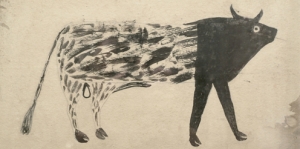
Great and Mighty Things: Outsider Art from the Jill and Sheldon Bonovitz Collection presents over 200 objects from one of the country’s most remarkable collections of works by American self-taught artists. On view at the Philadelphia Museum of Art through June 9, 2013, Great and Mighty Things includes drawings, paintings, sculptures, and other objects by 27 artists who created their oeuvres outside of the mainstream modern and contemporary art worlds.
Jill and Sheldon Bonovitz, who have spent over 30 years assembling their collection, will donate the works in the exhibition to the museum. The exhibition and gift include works by prominent outsider artists such as Martín Ramírez (1895-1963), Howard Finster (1916-2001), Purvis Young (1943-2010), and Bill Traylor (1854-1949) and spans from the 1930s to 2010. The Bonovitz’s generous donation will greatly enhance the Philadelphia Museum of Art’s collection as well as help to establish the institution as one of the primary centers for the study of American outsider art.
Outsider Art, which is known for its raw and out-of-the-ordinary beauty, has become a global phenomenon in the 20th and 21st centuries. Once considered the art of the mentally insane, Outsider Art now holds a prominent place next to modern and contemporary art while maintaining its individual identity.
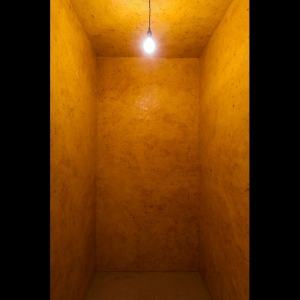
The Phillips Collection in Washington, D.C. will unveil its first permanent installation in over 50 years. Founded by the art collector and critic Duncan Phillips (1886-1966) in 1921, the Phillips Collection is the United States’ first modern art museum.
The new addition to the institution is a room made entirely from beeswax titled Wax Room. The experimental piece is the work of Wolfgang Laib (b. 1950), a conceptual German artist who is well known for his sculptural works made from natural materials. Laib has been making his beeswax chambers for over 25 years using hundreds of pounds of melted beeswax to coat walls and ceilings. The otherworldly spaces he creates are warmly lit by single hanging light bulbs.
The Phillips Collection’s other permanent installation is its Rothko Room, which holds four paintings by the abstract expressionist painter Mark Rothko (1903-1970). The intimate presentation of Rothko’s works was added as a permanent exhibit in 1960, six years before Duncan Phillips’ death. Phillips worked closely with Rothko, deciding which walls to hang each painting on and the kind of lighting and furniture that would best suit the room. The Phillips Collection was the first American museum to dedicate a space to Rothko’s work and it remains the only one designed in collaboration with the artist himself.
Laib’s progressive work is a welcomed addition to the Phillips Collection. While Phillips’ holdings consisted of many Impressionist paintings and other mainstream works, he also had a taste for the unconventional. Phillips was one of the earliest patrons of American modernists including John Marin (1870-1953) and Arthur Dove (1880-1946) and also harbored great admiration for Abstract Expressionism before it became a respected art movement.
Laib’s Wax Room will be unveiled on March 2, 2013.

An exhibition titled At War with the Obvious: Photographs by William Eggleston is now on view at the Metropolitan Museum of Art in New York. William Eggleston (b. 1939) became pioneering force in modern photography during the 1960s and helped legitimize color photography as a respected art form. He also popularized the dye-transfer color process, a practice that until then was primarily used by commercial photographers. Eggleston, who remains a prominent figure in the modern art world, draws inspiration from a number of sources including the photography of Robert Frank (b. 1924) and Henri Cartier-Bresson (1908-2004) as well as the musical compositions of Johann Bach.
A native of the Mississippi delta region, Eggleston’s photographs often depict the inhabitants as well as the physical landscape of the area. Drawn to seemingly ordinary subject matters, Eggleston is able to evoke a sense of complexity and raw beauty from the mundane. Often featuring roadside snapshots, backyard barbeques, parking lots, and diners, Eggleston’s photographs act as a lush interpretation of the American vernacular.
At War with the Obvious commemorates the Met’s acquisition of 36 dye-transfer prints by Eggleston, which took place in the fall of 2012. The addition fleshed out the museum’s Eggleston collection and included his first portfolio of color photographs from 1974, 15 prints from his seminal book, William Eggleston’s Guide (1976), and seven other important works from a career that has spanned over 50 years.
At War with the Obvious features a number of Eggleston’s most recognizable images including Untitled (Peaches!) (1970), Untitled (Greenwood, Mississippi) (1980), and Untitled (Memphis) (1970). The exhibition will be on view through July 28, 2013.
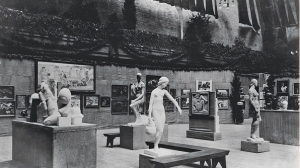
The 1913 International Exhibition of Modern Art, referred to today as the Armory Show, was one of the most influential art events to take place during the 20th century. The show, which was held in New York City’s 69th Regiment Armory, introduced the American public to experimental European art movements including Fauvism, Cubism, and Futurism. While realistic movements dominated the country’s art scene, works by Pablo Picasso (1881-1973), Henri Matisse (1869-1954), Wassily Kandinsky (1866-1944), and Marcel Duchamp (1887-1968) left the Armory Show’s American visitors awestruck.
On February 17, 2013, 100 years after the Armory Show took place, the Montclair Art Museum in Montclair, New Jersey presented The New Spirit: American Art in the Armory Show, 1913. The exhibition does more than just celebrate the significant art event; it commends the American artists who presented two-thirds of the nearly 1,200 works on view. While European art was a hugely important part of the Armory Show, The New Spirit aims to disprove the notion that the American art featured at the show was largely provincial.
The New Spirit brings together 40 diverse works of American modern art including realist works from the Ashcan School as well as more experimental pieces executed by the painters associated with the influential photographer and art dealer, Alfred Stieglitz (1864-1946). The Montclair exhibition presents works by well-known artists such as Edward Hopper (1882-1967), William Glackens (1870-1938), Marsden Hartley (1877-1943), Charles Sheeler (1883-1965), Robert Henri (1865-1929), and John Marin (1870-1953) alongside works by lesser-known artists including Manierre Dawson (1887-1969), Kathleen McEnery (1885-1971), and E. Ambrose Webster (1869-1935). The exhibition will also feature works by Paul Cézanne (1839-1906) and Matisse to illustrate the influence of European modern art on its American counterpart.
The New Spirit will be on view through June 16, 2013.
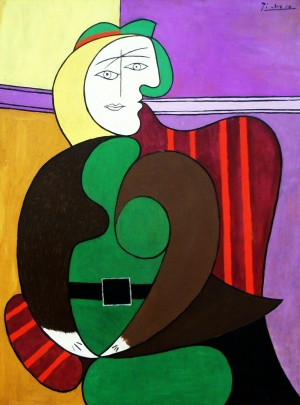
In 1913, the Art Institute of Chicago became the first American art museum to present the work of the young Spanish artist, Pablo Picasso (1881-1973). One hundred years later, the museum is celebrating its important relationship with the artist with the exhibition Picasso and Chicago.
Picasso and Chicago features 250 works by the artist who went on to become one of the defining figures in 20th century art. Paintings, sculptures, prints, drawings, and ceramics from the museum’s holdings as well as private collections in the city will be on view. This is the first comprehensive Picasso exhibition organized by the Art Institute in nearly 30 years.
The Art Institute of Chicago began collecting works by Picasso after the seminal 1913 Armory Show, which revolutionized American modern art. Works on view from the museum’s collection include The Old Guitarist (1903-04), Mother and Child (1921), Red Armchair (1931), and the sculpture Cubist Head of a Woman (Fernande) (1909). The exhibit also features impressions of The Frugal Meal (1904), one of only three examples in the world of the well-known Blue Period etching actually printed in blue ink.
Picasso and Chicago will be on view through May 12, 2013.
A major exhibition titled Ice Age Art: Arrival of the Modern Mind is now on view at the British Museum in London. With works dating as far back as 40,000 years, the show presents ice age objects from across Europe alongside works by modern masters including Henry Moore (1898-1986), Piet Mondrian (1872-1944), and Henri Matisse (1869-1954). The juxtaposition is meant to illustrate the fundamental human desire to explore life and oneself through art.
Many of the ice age-era works on view are made of mammoth ivory and reindeer antler and tend to be diminutive in stature. Highlights include a 40,000-year-old flute made from a vulture’s wing bone, a mammoth tusk carved to resemble a pair of reindeer, and a 23,000-year-old abstract ivory sculpture found in Lespugue, France that had a profound influence on Pablo Picasso’s (1881-1973) sculptural work of the 1930s.
The works, which range from 10,000 to 40,000 years old, will be on view through May 26, 2013.
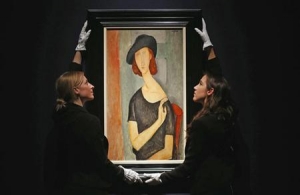
The success of Sotheby’s and Christie’s Impressionist, Surrealist, and Modern sales in London this week is proof that the demand for such works is on the rise. On February 6, 2013 Christie’s brought in $214 million worth of sales, just one day after Sotheby’s evening auction garnered $228 million.
The top lot at Christie’s was Amedeo Modigliani’s (1884-1920) portrait of his common-law wife titled Jeanne Hebuterne (au chapeau) (1919). The work, which was completed just one year before Modigliani’s death, sold for $42.1 million to one of Christie’s Russian-speaking client services representatives, who was bidding on behalf of a client. The work significantly surpassed its high estimate of $34.5 million.
Other major sales from Christie’s auction included Rene Magritte’s (1898-1967) landscape Le plagiat (Plagiary) (1940), which sold for nearly $8.2 million, Pablo Picasso’s (1881-1973) Nu accroupi (1960), which went for $11.4 million, and Pierre-Auguste Renoir’s (1841-1919) L’ombrelle (1878), which garnered $15.2 million.
With 89% of lots sold, the sale was a record in the Impressionist, Surrealist, and Modern category by Christie’s in February in the UK.
Suspended Forms: American Modernism 1908-1928 opened yesterday, January 31, 2013 at Driscoll Babcock Galleries in New York and will run through February 16, 2013. The exhibition focuses on American modern art’s earlier phase and includes paintings and drawings by modern masters such as Alfred Maurer (1868-1932), Walt Kuhn (1877-1949), Stuart Davis (1892-1964), Charles Burchfield (1893-1967), Marsden Hartley (1877-1943), Charles Sheeler (1883-1965), and Joseph Stella (1877-1946).
Suspended Forms will be held at Driscoll Babcock’s relatively new location in Chelsea. Founded 160 years ago, Driscoll Babcock Galleries moved from its former Fifth Avenue location to Chelsea in September 2012.
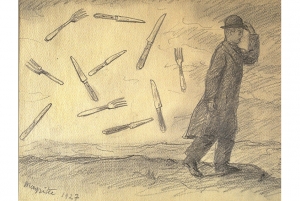
Surrealism, a cultural movement that includes visual arts, literature, film, and music, began in the 1920s with the musings of the French writer and poet, André Breton (1896-1966). Now celebrated and studied for its innovative and daring nature, surrealism pushed the boundaries in regard to established aesthetics and artistic techniques. While experimenting with modern conventions, surrealist masters such as Salvador Dalí (1904-1989), Max Ernst (1891-1976), René Magritte (1898-1967), and Joan Miró (1893-1983) went on to create some of the most revered artworks of the 20th century.
Drawing Surrealism, an exhibition at The Morgan Library & Museum in New York, explores the surrealists’ relationship with drawing. While most exhibitions and scholars tend to focus on the surrealists’ paintings and sculptures, drawing played a pivotal part in the movement. The medium, which is highly connected to the brain and offers a sense of immediacy and spontaneity, was the perfect vehicle for the surrealists who valued the subconscious mind, dream imagery, language, and happenstance. The Surrealists used techniques such as automatic drawing and frottage, which requires rubbing graphite or another drawings material on a sheet of paper that is place over a textured surface, to bypass the conscious mind, creating instinctive and inimitable works.
Drawing Surrealism, which is co-organized with the Los Angeles County Museum of Art (LACMA), presents over 165 works on paper and occupies two of the Morgan’s galleries. The exhibition is organized chronologically, illustrating how surrealist drawing techniques evolved and spread throughout the world over time. The Morgan, LACMA, Tate Modern (London), the Pompidou Center (Paris), the Museum of Modern Art (New York), and the Menil Collection (Houston) all contributed works for the exhibition.
Drawing Surrealism will be on view at the Morgan Library & Museum through April 21, 2013.
|
|
|
|
|